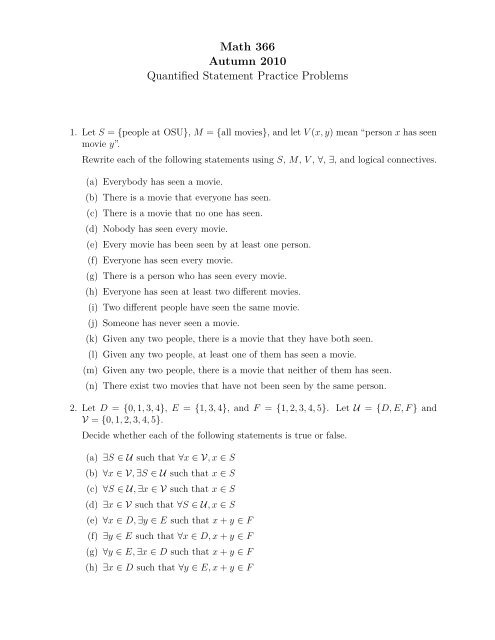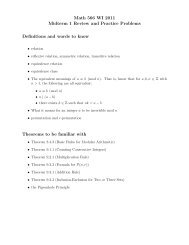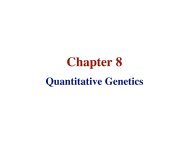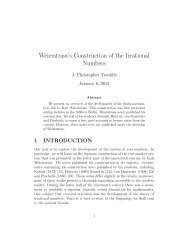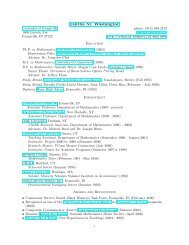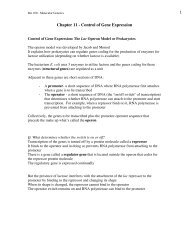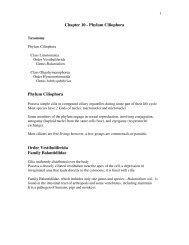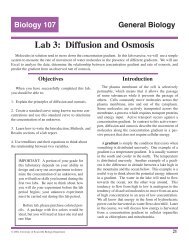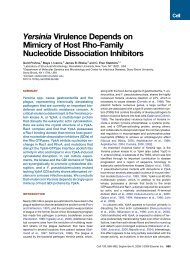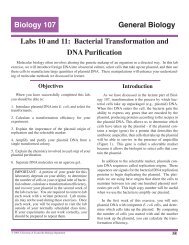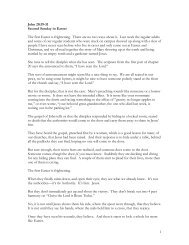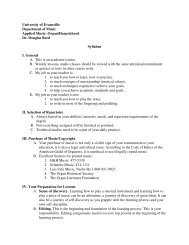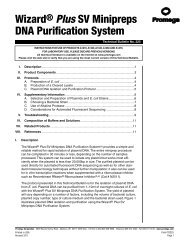Practice problems on quantified statements
Practice problems on quantified statements
Practice problems on quantified statements
You also want an ePaper? Increase the reach of your titles
YUMPU automatically turns print PDFs into web optimized ePapers that Google loves.
Math 366Autumn 2010Quantified Statement <str<strong>on</strong>g>Practice</str<strong>on</strong>g> Problems1. Let S = {people at OSU}, M = {all movies}, and let V (x, y) mean “pers<strong>on</strong> x has seenmovie y”.Rewrite each of the following <strong>statements</strong> using S, M, V , ∀, ∃, and logical c<strong>on</strong>nectives.(a) Everybody has seen a movie.(b) There is a movie that every<strong>on</strong>e has seen.(c) There is a movie that no <strong>on</strong>e has seen.(d) Nobody has seen every movie.(e) Every movie has been seen by at least <strong>on</strong>e pers<strong>on</strong>.(f) Every<strong>on</strong>e has seen every movie.(g) There is a pers<strong>on</strong> who has seen every movie.(h) Every<strong>on</strong>e has seen at least two different movies.(i) Two different people have seen the same movie.(j) Some<strong>on</strong>e has never seen a movie.(k) Given any two people, there is a movie that they have both seen.(l) Given any two people, at least <strong>on</strong>e of them has seen a movie.(m) Given any two people, there is a movie that neither of them has seen.(n) There exist two movies that have not been seen by the same pers<strong>on</strong>.2. Let D = {0, 1, 3, 4}, E = {1, 3, 4}, and F = {1, 2, 3, 4, 5}. Let U = {D, E, F } andV = {0, 1, 2, 3, 4, 5}.Decide whether each of the following <strong>statements</strong> is true or false.(a) ∃S ∈ U such that ∀x ∈ V, x ∈ S(b) ∀x ∈ V, ∃S ∈ U such that x ∈ S(c) ∀S ∈ U, ∃x ∈ V such that x ∈ S(d) ∃x ∈ V such that ∀S ∈ U, x ∈ S(e) ∀x ∈ D, ∃y ∈ E such that x + y ∈ F(f) ∃y ∈ E such that ∀x ∈ D, x + y ∈ F(g) ∀y ∈ E, ∃x ∈ D such that x + y ∈ F(h) ∃x ∈ D such that ∀y ∈ E, x + y ∈ F
3. Let f be a functi<strong>on</strong> <strong>on</strong> R. To say that f is uniformly c<strong>on</strong>tinuous means:for each positive real number ε, there is a positive real number δ such that for alla, b ∈ R, if |a − b| < δ, then |f(a) − f(b)| < ε(a) Write the definiti<strong>on</strong> of “f is uniformly c<strong>on</strong>tinuous” using the quantifiers ∀ and ∃.(b) Write the negati<strong>on</strong> of “f is uniformly c<strong>on</strong>tinuous” without using quantifiers.4. Let a n be a sequence of real numbers. To say that a n c<strong>on</strong>verges to L as n goes toinfinity means:given any positive real number ε, there is a positive integer N such that for alln > N, |a n − L| < ε(a) Write the definiti<strong>on</strong> of “a n c<strong>on</strong>verges to L” using the quantifiers ∀ and ∃.(b) Write the negati<strong>on</strong> of “a n c<strong>on</strong>verges to L” without using quantifiers.


